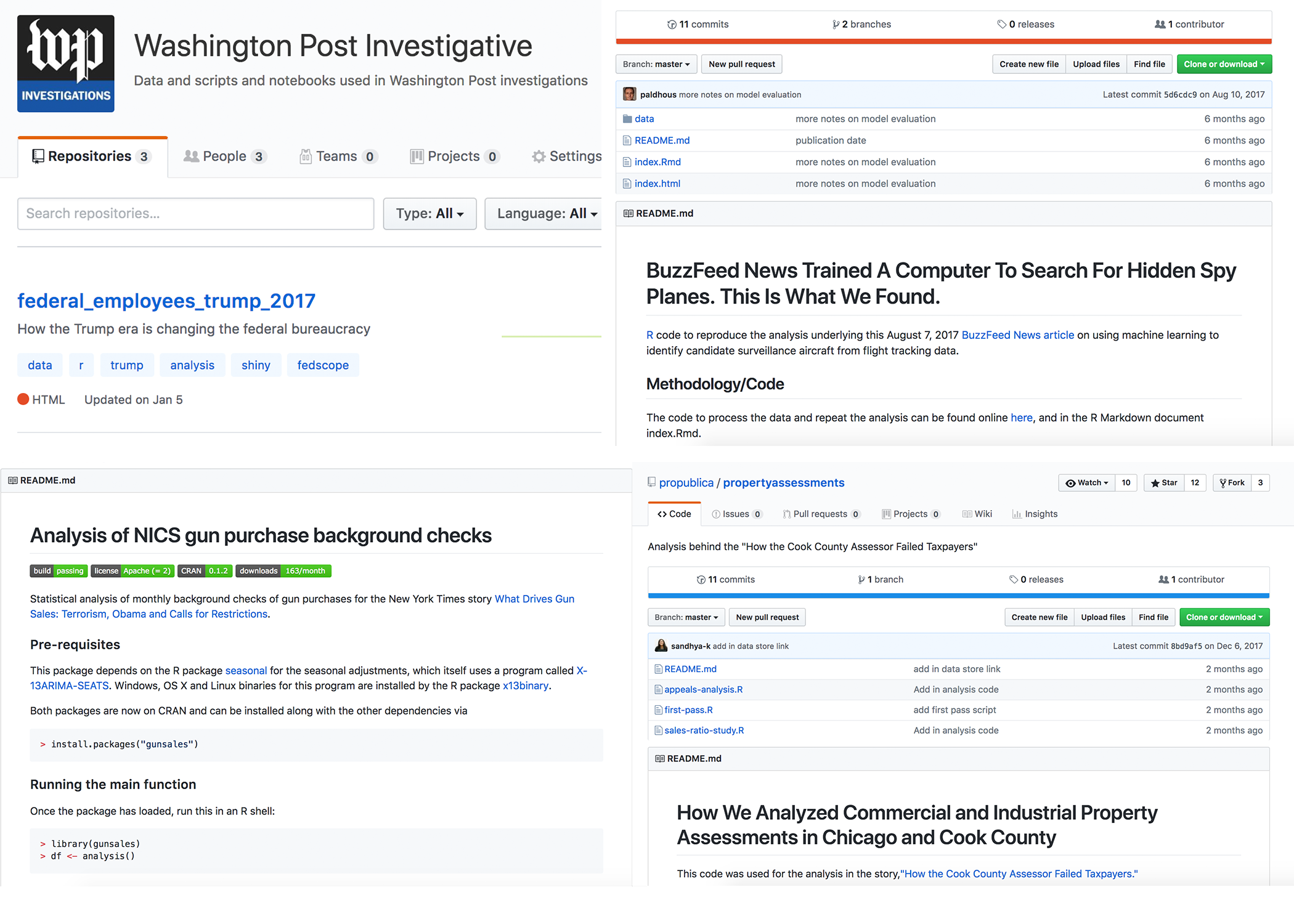Chapter 6
Publishing
Reproducible research means structuring your project and code so that others can follow your steps to verify your findings and possibly build on your work.
We’re going to learn how to move our scripts into R Markdown, which will allow you to weave a narrative of text around your code and visualizations. Imagine being able to communicate your findings as well as your thought process with your editor or members of your team.
Show your work
Everyone’s doing it!

For journalists, publishing your methodology and allowing others to start with raw data, transform it, and end up with your results themselves helps you:
- Build trust among readers
- Enhance transparency
- Promote community
Do this enough and you’ll be able to read and interpret others’ methodology.
This is a great way to learn new techniques and make you think about how to apply them to future stories.
Finally, the person who will benefit from documenting and scripting your process the most in the future is you.
R won’t help make you a faster data analyst.
The process you document for the data projects you agonize over today will make your life easier in the future.
You’re collecting enough scripts, whether your own or others, that you can apply to challenging stories in the future.
In this section
- RMarkdown
- More R Markdown
- Setting up an R workflow
How to use the R version of notebooks
Extra features that will enhance your reports
Best practices for staying organized to promote reproducibility
Files and folders
The repo for this class is on GitHub, but can be easily downloaded to your desktop with the following commands:
install.packages("usethis")
usethis::use_course("https://github.com/r-journalism/learn-chapter-6/archive/master.zip")
Readings
- How Open Should Open Source Data Visualization Be? - flowing data
- We Trained A Computer To Search For Hidden Spy Planes. This Is What We Found. - Buzzfeed
- Spies in the Skies - Buzzfeed
- 2016 will be the warmest year, but this is how deniers will spin it - Buzzfeed
- How Trump is changing the face of legal immigration - Washington Post | GH
- Our Data - fivethirtyeight
© Copyright 2018, Andrew Ba Tran